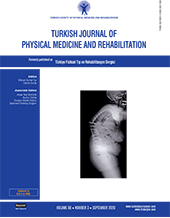Occupational therapy assessment and treatment approach in patients with subacute and chronic stroke: A single-blind, prospective, randomized clinical trial
Patients and methods: Between August 2014 and February 2016, a total of 35 hemiplegic patients with post-diagnostic periods (19 males, 16 females; mean age 58.3 years; range 37 to 77 years) were included. The patients were randomized into two groups as OT+SR group (n=17) and SR only group (n=18). The study was completed by 16 patients in each group. The patients in the OT group were given 45-min SR five days a week plus 45-min OT three days a week over an eight-week period, while the patients in the SR group received SR only (of the same duration and frequency as the OT group). The patients were assessed at enrolment (pre-treatment), and again after eight weeks of treatment using the Pinch and Grip Strength and the Purdue Pegboard tests, Global Daily Living Activities Scale, Performance Assessment of Self-care Skills (PASS), Nottingham Extended Activities of Daily Living (NEADL) Scale, Quality of Life Short Form (SF-36) Questionnaire, and Hospital Anxiety and Depression Scale (HAD) for their psychological state.
Results: Significant improvements were observed in within-group scores for PASS, Pinch and Grip Strength Test, NEADL Scale, and Purdue Pegboard test (p<0.05). After treatment, a significant increase was found in the SF-36 physical function, general health and physical total in-group scores of the OT group, whereas a significant increase was observed only in the physical total scores of the SR group (p<0.05). There was no significant improvement in the HAD scores within both groups (p>0.05). Inter-group comparisons revealed a further significant improvement in PASS instrumental daily activity index-physical subscale and Purdue Pegboard Test scores of the OT group (p<0.05). However, there was no significant difference in PASS activity, self-care and instrumental daily activity cognitive subscale, SF-36, HAD and hand grip and pinch strength scores between the groups (p>0.05).
Conclusion: Occupational therapy combined with SR applications has a beneficial impact on certain daily living activities and hand functions. Occupational therapy does not have any additional benefits on the quality of life, pinch and grip strength, and the psychological state.
Keywords : Activities of daily living, occupational therapy, pass test, stroke
















